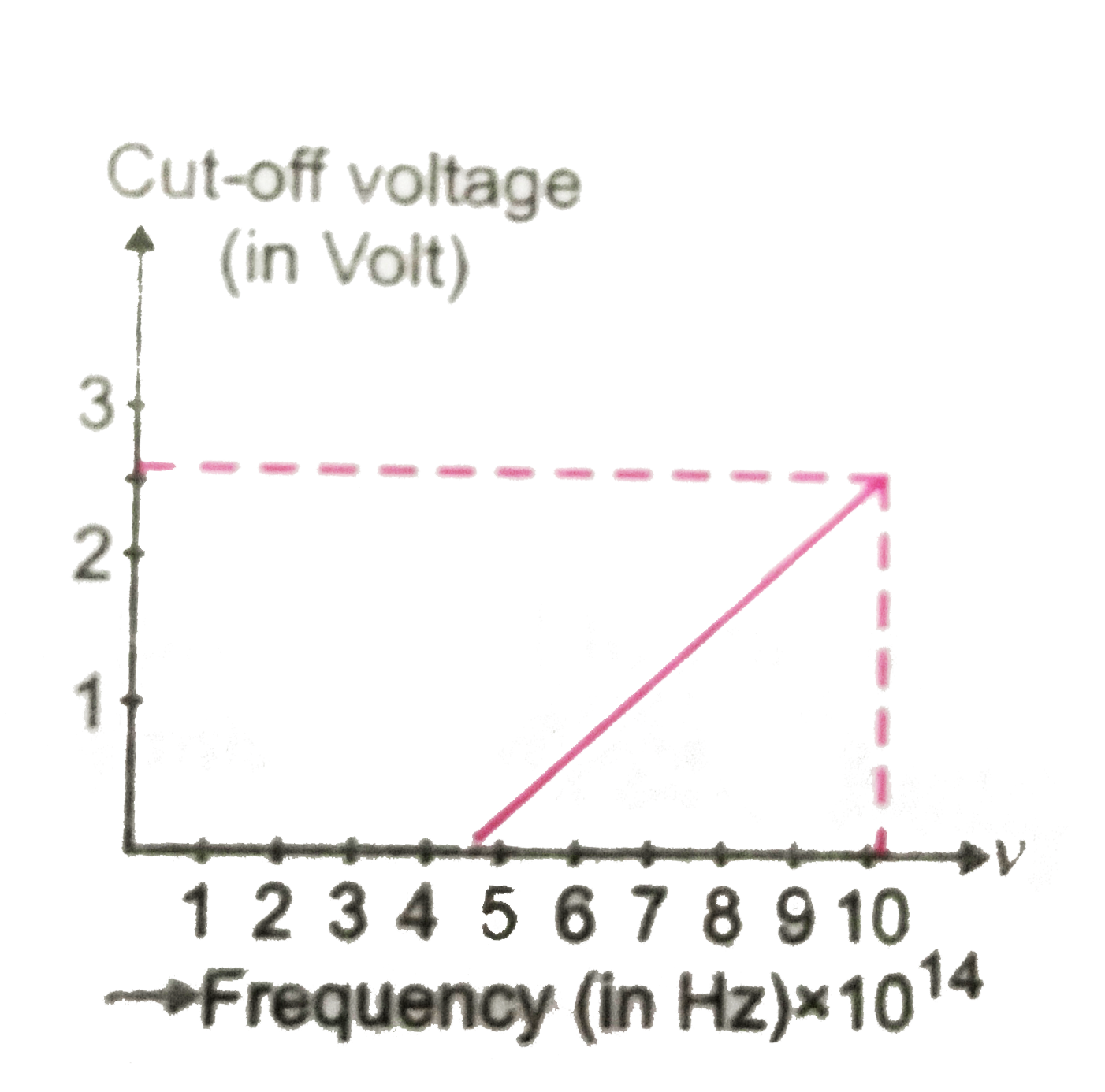For photoelectric effect in sodium, fig. shows the plot of cut-off voltage versus frequency of the incident radiation. Caclculate:

(i) the threshold frequency
(ii) the work function for sodium. (Use h=6.6×10−34Js)
Step by step video & image solution for For photoelectric effect in sodium, fig. shows the plot of cut-off voltage versus frequency of the incident radiation. Caclculate: (i) the threshold frequency (ii) the work function for sodium. (Use h=6.6xx10^(-34)Js) by Physics experts to help you in doubts & scoring excellent marks in Class 12 exams.
Updated on:21/07/2023Topper's Solved these Questions
- ELECTRONS AND PHOTONSBOOK - SL ARORACHAPTER - ELECTRONS AND PHOTONSEXERCISE - Problem Solution
19 Videos
- ELECTRONS AND PHOTONSBOOK - SL ARORACHAPTER - ELECTRONS AND PHOTONSEXERCISE - TYPE A : Problem For Self Practice
21 Videos
- ELECTROMAGNETIC WAVESBOOK - SL ARORACHAPTER - ELECTROMAGNETIC WAVESEXERCISE - Problem for self-practice
21 Videos
- ELECTROSTATIC FORCES, CHARGES AND FIELDSBOOK - SL ARORACHAPTER - ELECTROSTATIC FORCES, CHARGES AND FIELDSEXERCISE - Problems For Self Practice
1 Videos
Similar Questions
Calculate the threshold frequency of a photon from a photosensitive surface of work function 0.2 eV . Take h=6.6×10−34Js.
View SolutionA graph regarding photoelectric effect is shown between the maximum kinetic energy of electrons and the frequency of the incident light. On the basis of data as shown in the graph, calculate (a) threshold frequency , (b) work- function, (c ) planck constant

View Solution
Knowledge Check
In an experiment on the photoelectric effect , the slope of the cut - off voltage versus frequency of incident light is found to be 4.12×10−15V s . The value of Planck's constant is
A6.592×10−34 J sB6.592×10−31 J sC9.592×10−34 J sD6.592×10−30 J s
When a high frequency electromagnetic radiation is incident on a metallic surface, electrons are emitted from the surface. Energy of emitted photoelectrons depends only on the frequency of incident electromagnetic radiation and the number of emitted electrons depends only on the intensity of incident light.
Einstein's protoelectron equation [Kmax=hv−ϕ] correctly ecplains the PE, where υ= frequency of incident light and ϕ= work function.
Q. For photoelectric effect in a metal, the graph of the stopping potential V0 (in volt) versus frequency υ (in hertz) of the incident radiation is shown in Fig. The work function of the metal (in eV) is.A12.5B14.5C16.5D18.5The work function of a photoelectric material is 3.3 V. the threshold frequency will be equal to [Given that h=6.6×10−34Js]
A8.0×1014HzB8.0×1034HzC5.0×1015HzD5.0×1019Hz
In an experiment on photoelectric effect, the slope of the cut-offf voltage versus frequency of incident light is found to be 4.12×10−15V s. calculate the value of Planck's constant.
View SolutionCalculate the frequency of a photon, having energy 41.25 eV. (h=6.6×10−34Js).
View SolutionFigure is the plot of the stopping potential versus the frequency of the light used in an experiment on photoelectric effect. Find (a) the ratio h/e and (b) the work function.

View SolutionThe photoelectron of work function 3.1 eV is emitted with velocity 2.5×106 m/s . The frequency of incident radiation is
View SolutionA photon of energy 8eV is incident on a metal surface of threshold frequency 1.6×1015Hz, then the maximum kinetic energy of photoelectrons emitted is (h=6.6×10−34Js)
View Solution
